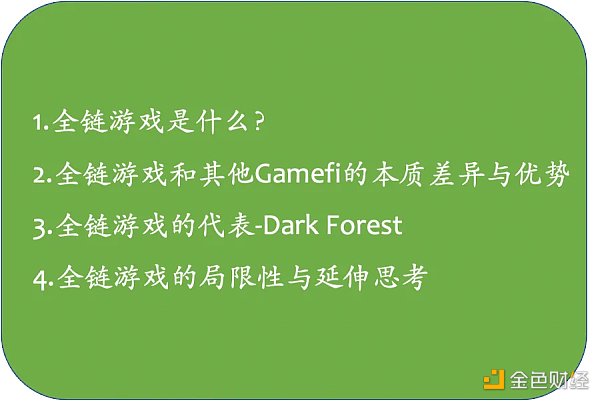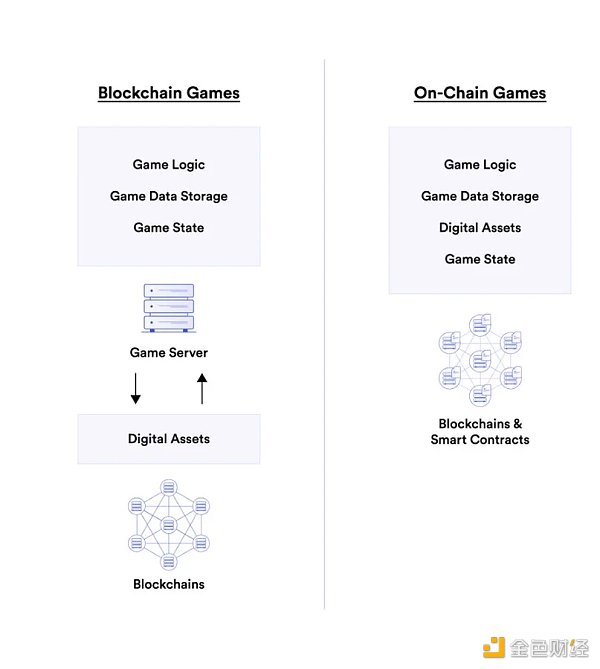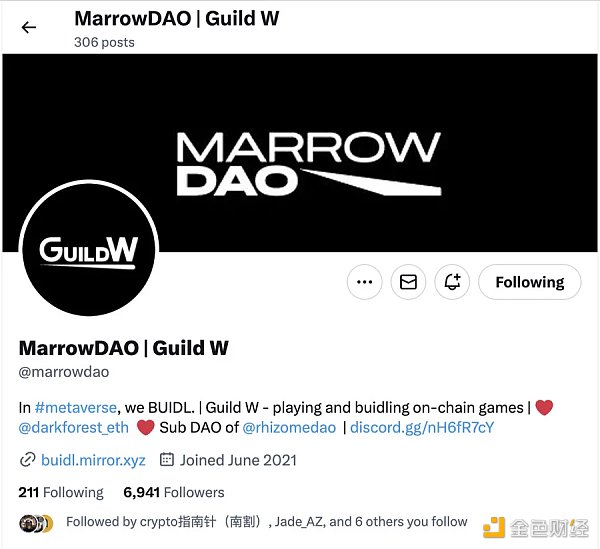In-depth discussion on the whole-chain game and the representative work of the race, Dark Forest.
In-depth discussion on the whole-chain game and Dark Forest, a representative work of the race.Author: Fred Li, Source: author’s Twitter @Dacongfred
I have recently developed a strong interest in blockchain games, especially after watching the movie “Uncut Gems”. The similarities between games and scams have inspired new ideas. Let’s talk about the blockchain game industry and its representative work: Dark Forest.
What exactly is a blockchain game? How does it address the issue of opaque information and fraud? What sets it apart from other projects? Today, let’s discuss the following 4 aspects:

- LianGuaiWeb3.0 Daily | Binance Futures Launches Copy Trading
- IOSG Panoramic scan of on-chain data tools track.
- Who are the top 25 revenue accounts on friend.tech?
1. What is a blockchain game?
Before we talk about blockchain games, let’s briefly understand the aspects involved in gaming, including game assets, game logic, game state, and game data storage. In traditional web2 games, such as Honor of Kings, League of Legends, and Genshin Impact, everything related to the game is stored on the company’s servers, and all the assets and gameplay settings are centralized.
In blockchain games, people have started to consider whether they can provide better gameplay/economic cycles by using blockchain technology. This led to the rise of popular blockchain games like Axie Infinity and Stepn, where assets are stored on the blockchain as NFTs. This creates an open and liquid economic system, giving game assets financial attributes and providing uniqueness and tamper resistance to player assets.
Although assets are stored on the blockchain, the core gameplay and logic still exist off-chain, which means there are still centralized drawbacks. Just like in the movie “Uncut Gems”, especially in games like poker and blackjack, the opacity of game processes and states can lead to numerous players being deceived. This is one of the reasons why many web2 money-based games are criticized.

If assets can be stored on the blockchain, can other game logic and data storage also be put on the chain? This is where blockchain games come in; in addition to assets, everything related to the game is stored on the blockchain, ensuring complete decentralization and on-chain operation of the game.

2. The essence difference and advantages of blockchain games compared to other web3 gaming
So, what are the benefits of storing game rules, game states, and data storage on the blockchain? In addition to the transparency and trustworthiness of game rules and states mentioned earlier, there is another significant advantage: the freedom of open composability.
Blockchain games enable permissionless interoperability, allowing players to add mods and create new plugins for the games, giving rise to a thriving ecosystem of remixes and even third-party creations. In this ecosystem, players spontaneously combine, construct, and experiment with various elements and gameplay, forming an organic community and facilitating the transition of games from PGC (Professionally Generated Content) to UGC (User Generated Content).
3. Representative of the Full-chain Game In order to better understand the full-chain game, let me introduce the representative work of the full-chain game, Dark Forest. It was developed by Brian Gu, a graduate of the Massachusetts Institute of Technology, under the pseudonym Gubsheep, inspired by Liu Cixin’s novel “The Dark Forest”. Other members include Alan, Ivan, and Moe, and the project is currently unfunded. However, their team’s new project, Argus Labs, recently raised $10 million.
Dark Forest is also one of the earliest incomplete information games built on a decentralized system. As a space conquest strategy game, players explore the infinite universe by embarking on a journey from their own planet, discover and occupy other planets and resources to develop their own empire.
The three major highlights of Dark Forest: two of them have just been mentioned in the introduction of full-chain games. One is that the game logic, data, and status are all on-chain, and centralized individuals cannot exert single control over their behavior and results;
The second is a freely open and highly combinable game ecosystem: the open-source full-chain game model endows Dark Forest with permissionless interoperability. Essentially, it is an Ethereum smart contract that can be interacted with by any address, giving rise to a prosperous secondary creation ecosystem (plugins) and generating more ecological communities.
For example, Project Sophon wrote a local library for Dark Forest, allowing users to start a game offline or on-chain; Ukrainian gaming organization Orden_GG built a trading market for artifacts and added liquidity pools; MarrowDAO|GuildW @marrowdao developed many plugins including artifact trading market and GPU mapping tools, making the UGC ecosystem very interesting.

Another highlight of Dark Forest is the use of zk-SNARKS technology for information hiding. For strategy games, if all information is transparent, opponents will know their position, and strategy resistance cannot be implemented under full openness and transparency. However, Dark Forest uses zk technology to hide most of the universe and opponents when players enter the game for the first time.
They only become visible when players explore hidden areas. Each time a player moves, they send proof to the blockchain to prove that the move is valid without revealing their coordinates in the universe.
In summary, Dark Forest redefines the possibilities of web3 games. Many people praise “The Dark Forest” as a perfect case of the intersection between games and cryptography, which also inspires many subsequent full-chain game projects. (However, I couldn’t find the officially disclosed number of players in Dark Forest, only the previously reported 10,000+ cumulative players)
4. Limitations and Reflections on Full-chain Games Despite the many benefits of full-chain games, the proportion of full-chain games in current Gamefi or Web3 Gaming is not as high as imagined. What is the reason for this? The reason also stems from the characteristics of full-chain games:
1. Low immediacy limits the game categories
– From the current types of full-chain games, it can be seen that they are mostly SLG-type strategy games. These types of games do not require high real-time requirements. However, game types such as single-player RPG, AVG, ACT, and MOBA have high requirements for immediacy. If all the data is stored on the chain, the current performance of the blockchain is still unable to support real-time requirements. These types of games are more suitable for asset on-chain.
2. High cost of on-chain interaction limits user participation
– All transactions on the chain require payment of gas fees. Without a reasonable economic model, it will become a burden for players to play games.
In addition, some extended thinking has been generated during the research of full-chain games. Welcome everyone to discuss together.
3. Are there any special features in the economic model of full-chain games compared to asset on-chain games? This still needs to be observed.
4. In the paradigm shift from PGC to UGC led by full-chain games, how users can engage in low-cost secondary creation is a key factor. Therefore, the infrastructure of game development, such as plugins/tools, is also crucial. It may give birth to new opportunities here?
We will continue to update Blocking; if you have any questions or suggestions, please contact us!
Was this article helpful?
93 out of 132 found this helpful
Related articles
- Evening Must-read | Can Web3 Social Networking Generate a New Killer Application?
- Which public security authorities in China have jurisdiction over virtual currency exchange cases?
- Opinion friend.tech may have initiated a return to the essence of SocialFi.
- 10 Reasons Why Cryptocurrencies Can Rise 10 Times in the Next Few Years
- Stablecoin’s Snowball May Lead Crypto to the Mainstream
- An Introduction to THORChain’s Loan Mechanism Interest-free, No Liquidation, No Maturity Date
- What impact will the SEC’s approval of Ethereum futures ETF have?






